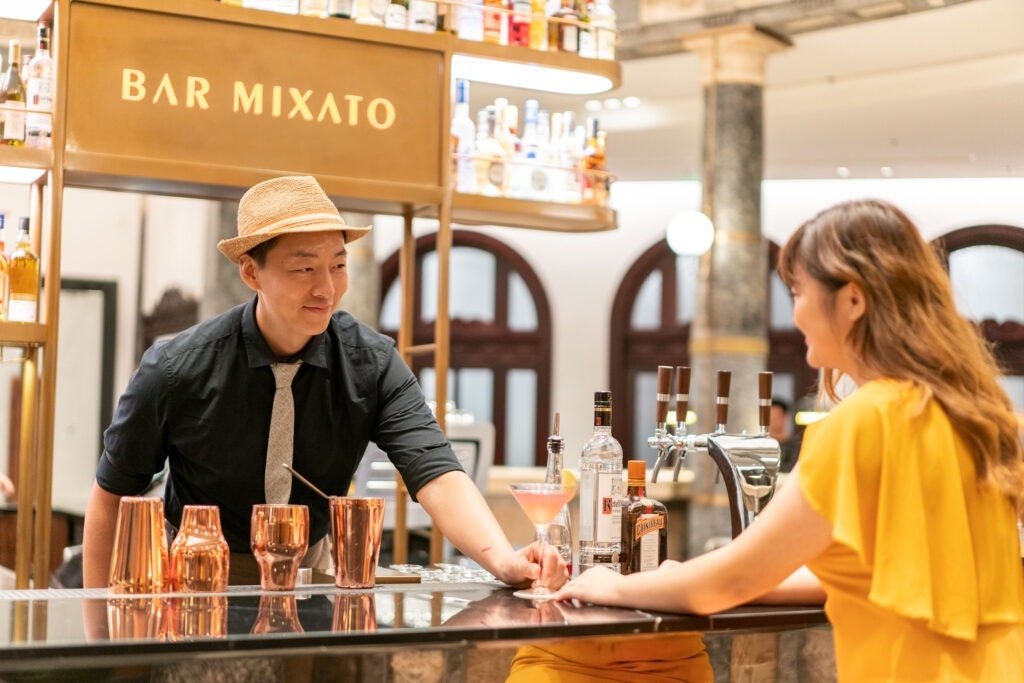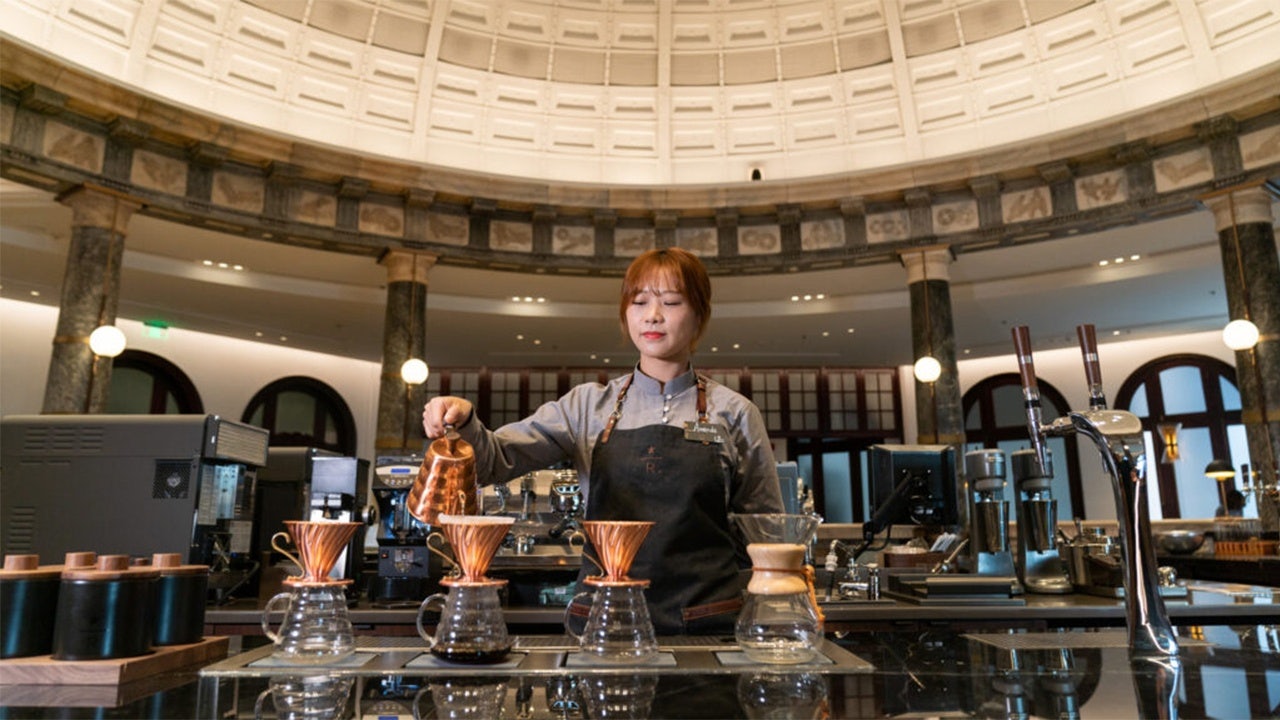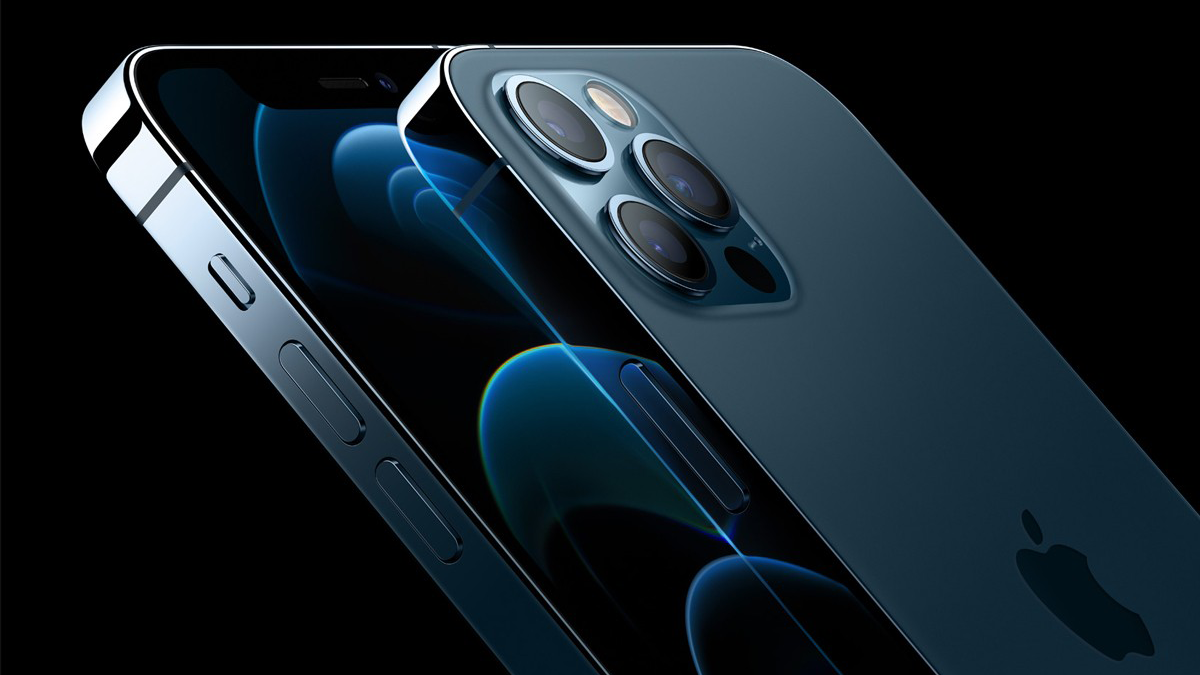Key Takeaways:#
Price points are generally high for premium products. Yet, they can help assure consumers that New Luxury is frequently still within financial reach.
Chinese consumers are attracted to brands that feel special. This specialness is at the core of New Luxury, and consumers anticipate stores like these to embody innovation.
Consumers are likely to reject New Luxury brands that look like they were intended for the masses, as they seek aspirational lifestyles.
The smell of coffee in a Starbucks welcomes millions of Chinese consumers every day. In fact, the ritual of stopping by a Starbucks has come to represent the rise of the Chinese urban middle-class consumer. And China's middle-market shoppers are trading up to higher levels of quality and refinement than ever before. China is Starbucks’ biggest growth market, where sales increased by 19 percent in the third quarter of 2021 alone.
Starbucks may not meet the strict criteria of a traditional luxury brand, but it occupies a market space that Silverstein and Fiske refer to as ‘New Luxury’ in their 2003 book "Luxury for the Masses." The context for this luxury classification is rooted in the turn-of-the-century United States. Yet, China has become the current strategic market destination for New Luxury, with mass-marketed brands bringing the appreciation of luxury to mainstream consumers. Here, we outline five ways New Luxury is unsettling the Chinese luxury landscape, as consumers search for prestige and self-identity in their everyday lives.
Performance#
Product performance is one aspect that creates higher degrees of perceived quality. Belgian or Swiss chocolate brands leverage their country of origin to convey tradition and expertise. Craft beer and spirits brands play on their perceived scarcity and craftsmanship. However, prestige can also be communicated beyond simple product performance. An interesting yet unconventional example is the Portuguese paper tissue brand Renova, which is expanding in China. Tissue is a category that is not particularly notorious for ‘luxury,’ but the iconic colored Renova toilet paper has built up its associations with avant-garde design. The first black toilet paper in the world was even referred to in The New York Times as “this season's must-have.”
Accessibility#
Distribution is essential for driving brands toward high market penetration, which leads to greater brand awareness and provides credibility to consumers seeking reassurance. Starbucks has over 5,100 stores in 200 cities in Mainland China, with plans to add more than 600 new stores this fiscal year. This sprawl stands in obvious contrast to traditional luxury brands, where a brand's distribution has traditionally been finely managed to control exposure and access.
Affordability#
Price points are generally high for premium products. Yet, they can help assure consumers that New Luxury is frequently still within financial reach. A Starbucks latte is priced near the top of its category, but Chinese middle-market consumers can still afford 30 RMB for a coffee and a little extra for a croissant or bagel. For some, this purchase may be considered an indulgence yet an affordable one — a self-reward for their hard work. But this rationalization can soon become a habit. Meanwhile, there are other routes to affordability for New Luxury. Discretionary purchases, such as iPhones, are deemed within reach, thanks to the availability of financing plans.
Aspirational#
Consumers are likely to reject New Luxury brands that look like they were intended for the masses. The market failure of Garnier and Revlon in China is an interesting anecdote. Underlying Starbucks’ success is not just its coffee. It also exemplifies the aspirational lifestyle of younger consumers. To be modern and cosmopolitan is aspirational consumers’ goal. In this vein, Apple has intriguingly managed to regain its luster as a status brand. Revenues for Greater China in Q3 2021 increased 58.2 percent over the same period in 2020, rising to 14.76 billion.
Distinctiveness#
Chinese consumers are attracted to brands that feel special. Flagship stores, such as the Apple Sanlitun in Beijing or The Starbucks Reserve Roastery in Shanghai, have been elevated to the same retail echelon as any leading luxury brand worldwide. They are truly unique works of retail art. This specialness is at the core of New Luxury, and consumers anticipate that stores like these will embody innovation. For example, Starbucks launched ‘Bar Mixato’ at its Starbucks Reserve stores across Shanghai, Beijing, Tianjin, and Shenzhen to provide an exclusive range of coffee and tea-based concoctions for customers.

The luxury market in China is often understood through the lens of traditionally defined luxury brands. Yet, a new and growing class of aspirational consumers view New Luxury as a system of self-rewards, making it a desired social status. That implies that luxury positioning is relative and may even be contradictory. Undoubtedly, premiumization is a part of this phenomenon. What sets New Luxury apart is how well emotional triggers get used to elevate the brand. Renova, for example, is positioned as a body care brand that leverages positive associations with wellbeing to move its products.
In China, New Luxury will continue to shape and reflect everyday desires and aspirations; but it will also evolve expectations within this contemporary consumer society. Look at it as the refined democratization of luxury, and it's a process that has continued to progress.
Glyn Atwal is an associate professor at Burgundy School of Business (France). He is co-author of Luxury Brands in China and India (Palgrave Macmillan).


